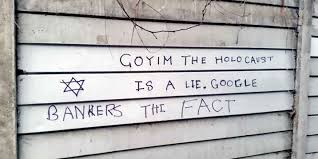For sixty years, the Anti-Defamation League has been profiling Americans to try to monitor antisemitic beliefs. For the first half century of doing that, they found a fairly steady and ongoing decline in anti-Jewish sentiment.
They would ask people if they agreed with a number of statements about Jews. Things like: Jews don’t care what happens to anyone but their own kind. Jews do not share my values. Jews are more willing than others to use shady practices to get what they want.
Over many decades, belief in many of those once-popular anti-Jewish tropes began to decline. American Jews increasingly felt comfortable in a society which while far from being perfect offered a much more secure life than in other countries. America had become a country where being Jewish was no longer a barrier — as it had once been — to success and acceptance. And that expressed itself in almost universal support for the state of Israel. New York City would hold annual “Salute to Israel” parades down the main avenues, with tens of thousands in attendance including major political figures from both parties.
Anti-Jewish sentiment was largely confined to the older generation — people who may have remembered hotels and clubs where Jews were effectively barred. Younger people, on the other hand, were far less likely to embrace anti-Jewish beliefs, just as they were less likely to be racists or homophobes.
But in the last few years, the ADL’s annual survey has shown a very dangerous trend. Not only are antisemitic beliefs becoming more popular in the United States, but they are most popular among younger people.
In looking at the data before and after the 7 October Hamas attack on Israel and Israel’s response, the ADL found that this had surprisingly little effect on anti-Jewish attitudes. In other words, Americans weren’t turning against Jews because of something Israel did. The sources of anti-Jewish hatred run much deeper than that.
As the historian Deborah Lipstadt, who is currently serving as the United States’ Special Envoy to Monitor and Combat Antisemitism, told an audience in London last month, antisemitism is one of the oldest hatreds. It has been around for hundreds, even thousands of years. It rises and falls, swinging in our own lifetimes from being popular to being a taboo, and back again.
None of this has anything to do with the policies of the Netanyahu government.
This was made very clear when the first ugly, anti-Jewish protests took place in New York City, with the support of Democratic Socialists of America, These were not in response to Israeli actions in Gaza, but to Hamas’ attack on Israel. The demonstrators were in the streets, filled with joy (as some were to put it) at the heroism of the Palestinian “resistance”.
If Israel is not to blame for the sharp rise in antisemitism — also in the UK, and also preceding the current war in Gaza — what does cause it? On this, the ADL report was, unfortunately, silent.
But historians will tell us that antisemitism often thrives during periods of social unrest, rapid change, and economic crisis. That is certainly what happened in Germany in the 15 years following the country’s military defeat in the First World War. Many of the same factors that are seen as causes of the rise of right-wing populist movements today are the same factors that can lead to a rise in antisemitism.
So long as we live in an age of “wars, crises and catastrophes” as Karl Kautsky described it a century ago, antisemitism will thrive. Netanyahu can be ousted from power and a more conciliatory Israeli government come in, with the promise of a more reasonable, humane policy towards the Palestinians. That would be a very welcome development.
But according to the data we have, that may not help much in the fight against that most ancient prejudice, antisemitism.
This column appears in this week’s issue of Solidarity.
